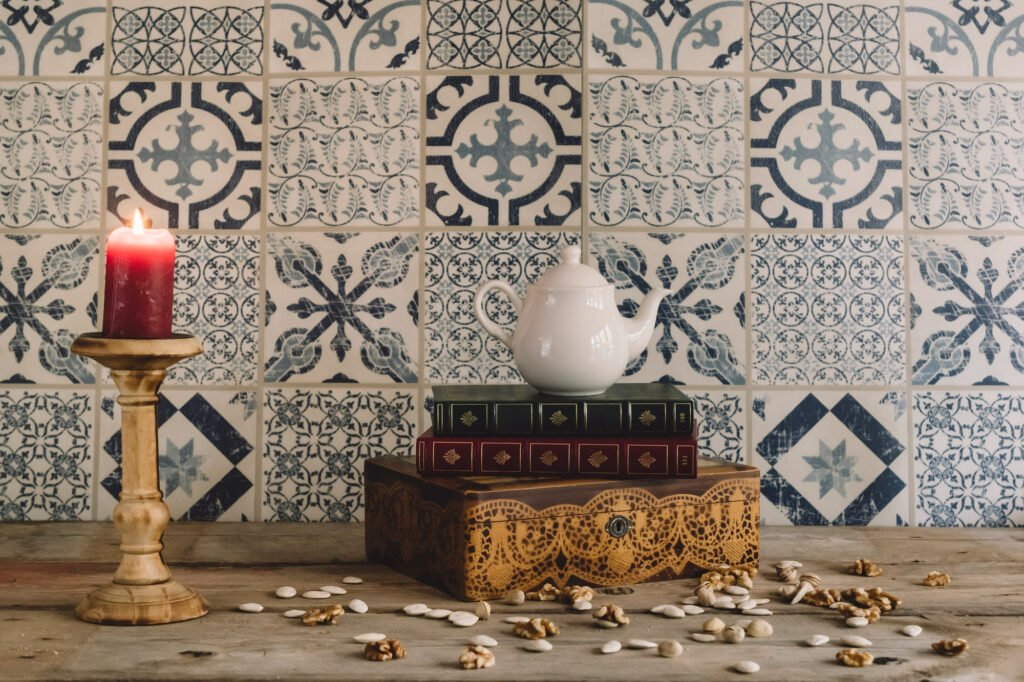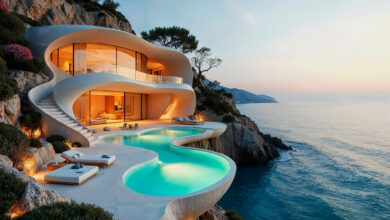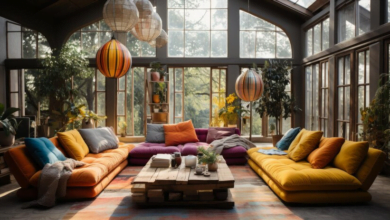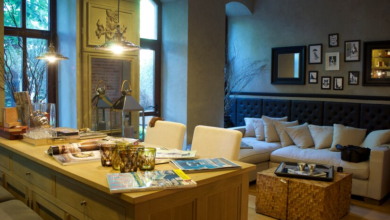A Guide to Mastering Mid-Century Italian Interior Design

Do you want to go back to your memories of the 1950s? Yes, there’s a design movement that perfectly captures the essence of that era. That’s mid-century Italian interior design, and it’s not just about chrome and curved couches (although those are pretty cool too). It’s a story of artistic rebirth and a design philosophy that continues to influence homes today. Let’s show you how to bring that “la dolce vita” feeling into your own home.
What is Mid-Century Italian Interior Design?
Mid-century Italian interior design was a design movement that took the world by storm in the post-World War II era, from the 1940s to the 1960s. This period was marked by a spirit of rebirth and innovation in Italy. Design in the mid-1900s was defined by a shift towards clean lines, functionality, and a minimalist design approach. The mid-century modern Italian style featured timeless elements with a retro charm.
Elements of Mid-Century Italian Design
- Simplicity– One of the key elements of mid-century Italian design is its simplicity and clean lines. Minimalist furniture pieces often feature simple geometries, and less ornamentation, focusing instead on form and function.
- Quality Workmanship– Italian designers are renowned for their great attention to detail and superior craftsmanship. This era saw the use of high-quality materials like teak, rosewood, and leather, ensuring that pieces were not only beautiful but also durable.
- Innovative Materials– Italy’s maestros introduced the world to groundbreaking concepts, techniques, and materials. During this period, experimentation with novel materials such as plastic, fiberglass, and metal began which were often combined with traditional materials resulting in creative, modern pieces.
- Open Floor Plans– Open plan layouts with the merging of indoor and outdoor spaces using blinds, sheer curtains, and window treatments were prominent features in Mid-century Italian interior design.
Iconic Mid-Century Italian Designers
The 20th century saw a golden age of Italian furniture design. Pioneering designers like Carlo Mollino created iconic pieces that remain highly popular today, often fetching premium prices on the secondary market. Let’s look at some of the legendary Italian designers:
Gio Ponti
Gio Ponti was a renowned mid-century Italian architect and industrial designer. Known for his versatility, Ponti’s work spanned from furniture to writing. His designs are celebrated for their elegance and functionality. He designed more than 200 projects and over 250 pieces of furniture, the Superleggera chair for Cassina being his most famous one. Gio Ponti furniture is known for its minimalism, lightness, and natural materials.
Achille Castiglioni
The internationally acknowledged master of innovation, Achille Castiglioni was an Italian architect and designer whose designs featured the clever use of materials and a playful design approach. Achille Castiglioni furniture was characterized by unconventional design solutions; the egg-shaped Brera lamp with diffused light and the Arco lamp, with its sweeping arc and marble base, are perfect examples of his ability to blend functionality with artistic flair.
Franco Albini
Franco Albini was another luminary Neo-Rational Italian architect and designer known for his ability to merge age-old craftsmanship and modern design principles. His historic Cassina and Poggi furniture and modern minimalistic décor pieces used natural materials. His iconic building projects in Genoa, such as the Palazzo Bianco, showcase his architectural strength, while the Veliero bookcase is one of his standout creations, combining imaginative structural designs with a sculptural quality.

Designing Mid-Century Italian Homes
Here are some tips to bring Mid-century Italian interior design into your home:
1. Choose the right furniture
Select furniture pieces to suit the mid-century Italian look you’re looking to achieve. Look for pieces with clean lines, organic shapes, and high-quality materials. A leather sofa with a sleek silhouette, a teak sideboard, or a glass-topped coffee table with a sculptural base can become focal points in your living space.
2. Balanced Color Palette
Mid-century Italian design often features a playful color palette with neutrals like browns, beiges, creams, taupe, and greys, complemented by moody bold accents in shades of orange, yellow, red, green, or turquoise. These colors are some of the best choices to create warm and retro-style living rooms and bedrooms.
3. Innovative Lighting Solutions
In mid-century design, Italian chandeliers with clean lines or table lamps and floor lamps with minimalist design were popular and so are artistic choices today to suit your design theme. For example, a brass Sputnik chandelier or a Fontana Arte Falena table lamp can be your top picks when designing your interior.
4. Rich Textiles and Patterns
Use luxurious textiles that reflect Mid-century Italian interior design. Choose fabrics like colorful and neutral wools, throws, drapes, tapestries, linen, and leather for their natural aesthetic. Fun geometric patterns, textured stripes, or subtle prints add interest without clashing with the simplicity of the design.
5. Vintage Art and Décor
Italian mid-century modern décor is highly prized for its minimalist and eye-catching vintage designs. Hang paintings and artwork with vibrant colors that reflect the innovative spirit of mid-century Italian designers. Pick traditional home decorative items including abstract art, curved lines, ergonomic shapes, animal sculptures, and ceramics. These pieces should complement rather than overpower the rest of the décor.
6. Merging the Old and New
While you’re following the mid-century design principles, don’t be afraid to mix vintage pieces with contemporary items. This avoids making the room stuck in one era and will instead feel more like you with a fun mix of styles- an eclectic vibe.
Final Words
Mid-century Italian interior design offers a perfect blend of elegance, innovation, and timelessness. By integrating these key elements and tips such as high-quality furniture, a thoughtful color palette, and iconic lighting, into your design theme, you can create spaces as stylish and sophisticated as this iconic design era!
Source: Architectural Digest



